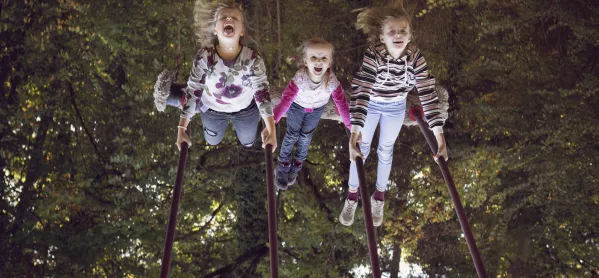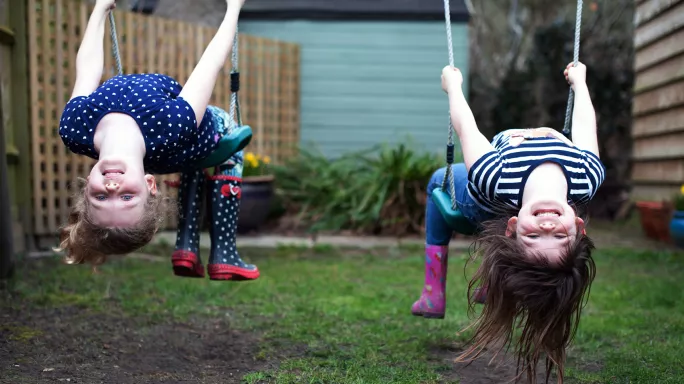- Home
- Why every primary school needs a set of swings
Why every primary school needs a set of swings

One of my proudest accomplishments of this school year has been hanging up two tyre swings in our joint nursery/Reception outdoor area.
They are constantly in use and have sparked an immense amount of challenging physical play, conversation and negotiation.
And so I am writing to urge more early years settings and schools to bring back opportunities for our children to climb, swing and spin.
Early years: EYFS: why risky play is key, and how to support it
Quick listen: Learning through play: what are the benefits?
Want to know more? Do ‘soft’ approaches to primary behaviour management work?
Children’s fun and enjoyment for its own sake sadly isn’t enough of an argument in our current context. Luckily, there is more than ample biological and neurological evidence that connects children’s play with swings to essential aspects of physical, cognitive and emotional development.
The benefits of swings: vestibular sense
We actually have more than five senses. One of them is our vestibular sense, which is vital for not only our sense of balance but also our overall cognitive and physical development.
This sense develops in our inner ears. To over-simplify it, there is a little chamber filled with liquid in our inner ears. As children move their heads up and down, and left and right, and spin around and go upside down this liquid moves around over the little hairs.
When stimulated, these hairs send messages to our brain about the position and movement of our bodies in space.

This area also serves as our brain’s air-traffic control system, receiving, sorting and relaying sensory information from our other sensory organs and passing it on to the corresponding areas in our brain.
This means our vestibular sense has crucial implications for children’s ability to concentrate, behave and respond to others.
Turn-taking
When I set up the first swing, there was a mad rush for everyone to use it, bringing bickering, frustration and tears. Some staff felt the need to implement a turn-taking system that us adults had to manage.
With respect, I thought this was quite unnecessary. Not only would it inadvertently be training the children to think they needed us to police the use of the swings, it also sacrificed valuable opportunities for teaching the children essential communication and social skills to sort the use of the swings out themselves.
Since these swings were a permanent part of the environment, after a week or two, the initial fury inevitably tapered off as children realised they can be accessed as and when needed.
If you were to visit our corner with the swings now, you would see many children using them at once. One time I saw a child sitting in the middle, two standing on top and three children pushing them back and forth. They were having a truly amazing time, all without any adult refereeing.
In addition, the prior discussion, negotiation and collaboration needed to sort out who was going to sit where and who was going to push was also a wonderful process to watch unfold.
Health and safety
Swings are too rare a sight these days, with worries about litigation nearly killing them off entirely. It is on us to advocate and educate the necessary people in our settings to help bring them back.
Thankfully the Health and Safety Executive is on our side, following a 2012 report in which it praised the many benefits of play, especially when children are “not wrapped in cotton wool”.
Active living
There is so much talk today about children who live sedentary lives, who can’t focus, write well or stay at their desks, and have no patience or social skills. We adults have to take collective responsibility for fixing this, and play is a great place to start.
Swings won’t magically fix all of the problems of modern life, but it is high time they took their place again as a fixture of our early years settings and schools. Who’s with me?
David Cahn is a early years teacher and carer in a large and busy Leeds children’s centre and primary school. He is also the author of Umar, a children’s book about a young boy fascinated with keys.
Keep reading for just £1 per month
You've reached your limit of free articles this month. Subscribe for £1 per month for three months and get:
- Unlimited access to all Tes magazine content
- Exclusive subscriber-only stories
- Award-winning email newsletters



